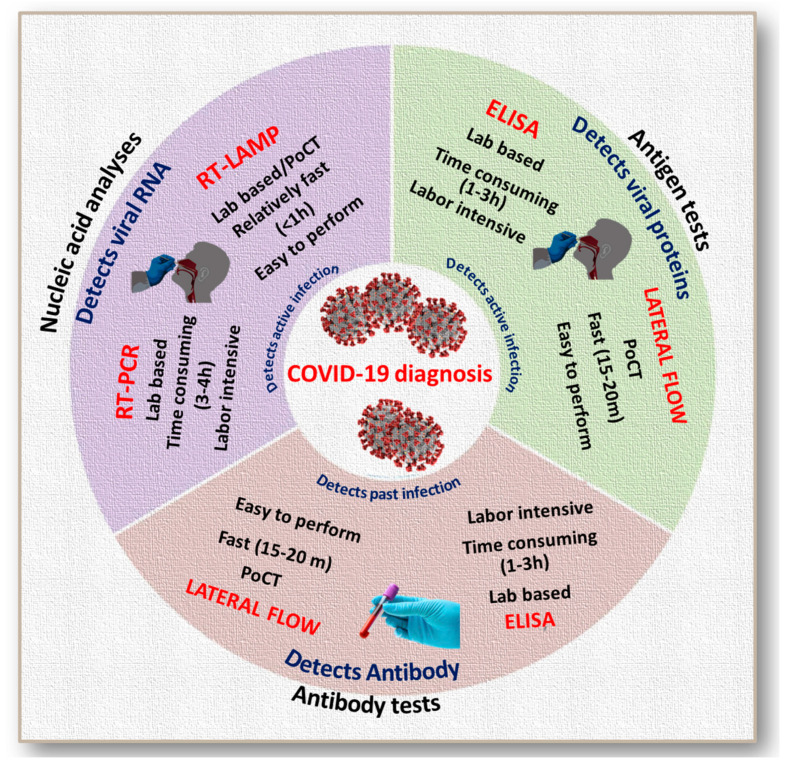Figure 1.
Scheme showing the comparison of different methods used for COVID-19 diagnosis (PoCT: Point of Care Test). Nucleic acid tests detect the genetic material from the virus. To collect the infected cells, a nasal or throat swab of the patient is required. Through a series of chemical reactions, copies of viral genetic material are produced. It helps to analyze whether or not a person has active infection. Polymerase chain reaction (RT-PCR) and Reverse Transcription Loop-Mediated Isothermal Amplification (RT-LAMP) are two major tests used in nucleic acid analysis. In total, 3–4 h are required to carry out RT-PCR. RT-LAMP is a simple method which can detect few copies of target nuclei sequences under isothermal conditions with the help of specially designed additional primer sets. It can be performed in laboratories or tested in point of care settings. RT-LAMP reaction can be completed within an hour. A rapid antigen test is a rapid diagnostic test which detects the presence of viral antigen usually in the nasopharyngeal samples. This is the newest method among the above described tests. In this type of test, chemicals fragment the virus and then antibodies attached to a plate detect these fragments. This provides relatively fast test results within 15 min. This again, helps to analyze whether or not a person has active infection. Lateral flow and enzyme-linked immunosorbent assays (ELISA) are the major types of antigen tests. Antibody tests help to detect past infections or those at advanced stages. Lateral flow test is the commonly accepted cost-effective antibody test which does not require any specialized equipment. It is a relatively fast method of testing, completed within 15–20 min. This type of assay is performed on blood samples. ELISA is a laboratory-based antibody test which requires skilled professionals and is a time-consuming task of 1–3 h. By this method, up to 96 samples can be tested per batch.

